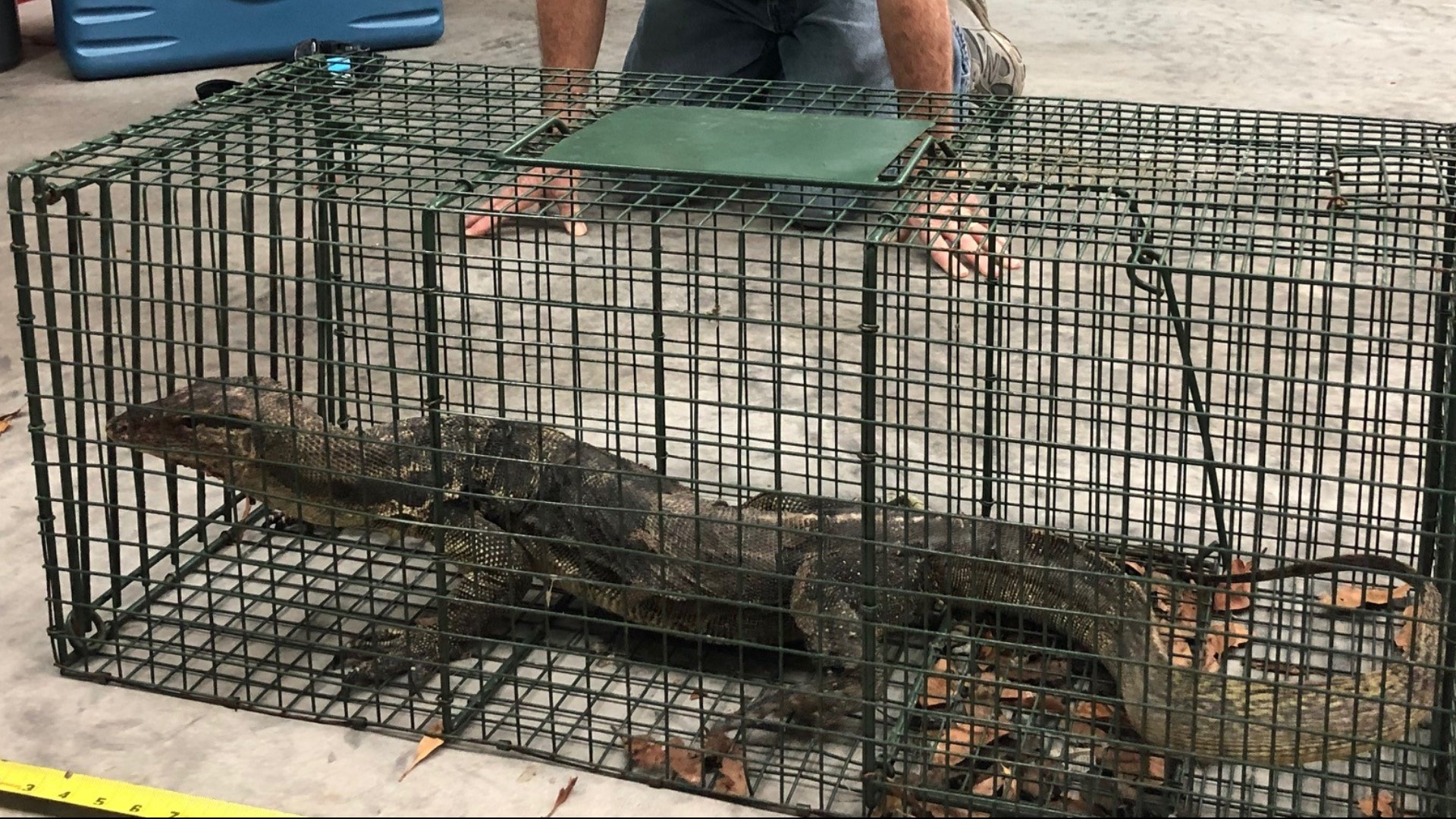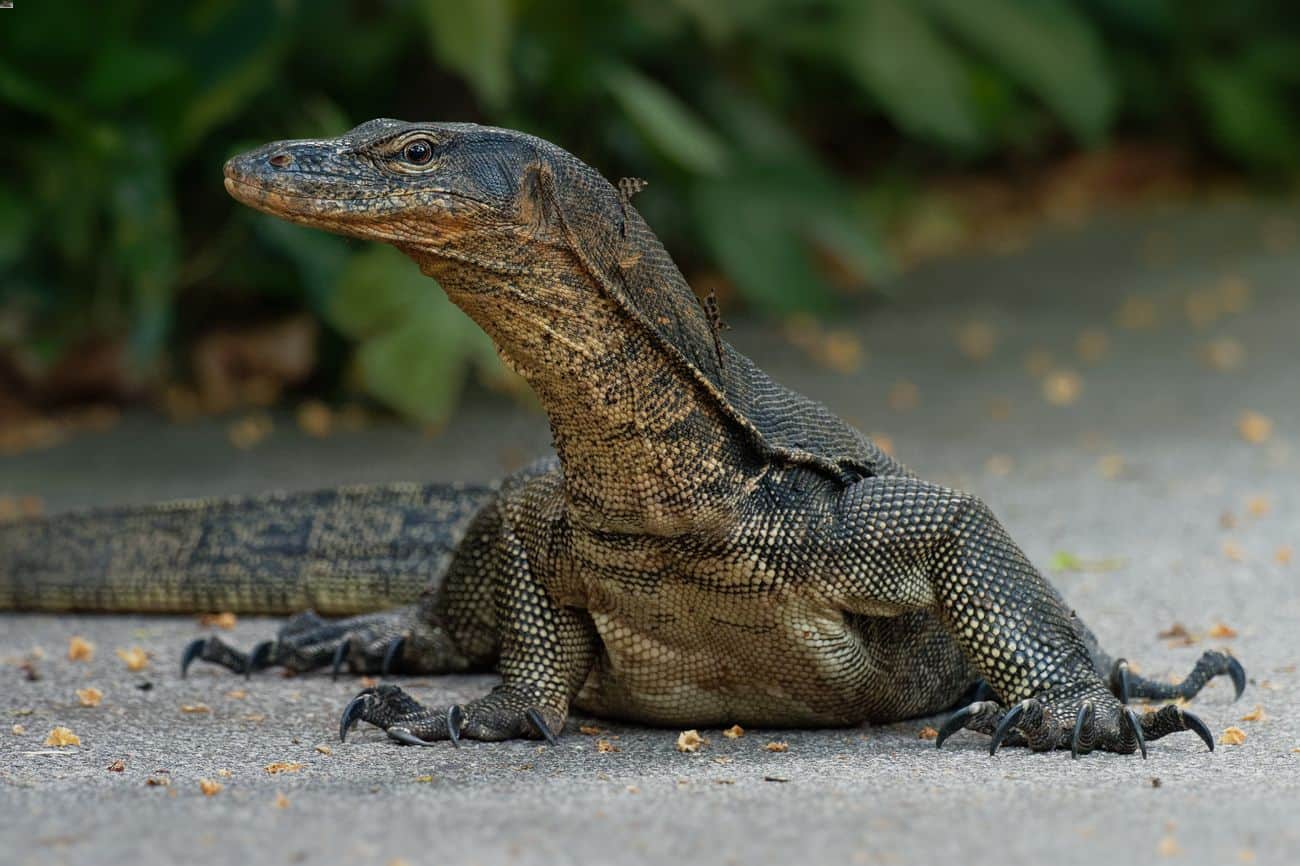Distribution and Habitat
Asian water monitors are native to Southeast Asia and were introduced to Florida as exotic pets. They have since established breeding populations in the southern part of the state, primarily in the Everglades and surrounding areas.
The presence of Asian water monitors in Florida is influenced by several environmental factors. They prefer warm, humid climates and are often found near bodies of water such as canals, lakes, and marshes. They also require access to dense vegetation for cover and nesting sites.
Impact of Human Activities
Human activities have had a significant impact on the distribution and habitat of Asian water monitors in Florida. The development of land for agriculture, urbanization, and other purposes has reduced their natural habitat and fragmented their populations. In addition, the release of exotic pets into the wild has contributed to the spread of Asian water monitors into new areas.
Physical Characteristics and Behavior

Asian water monitor florida – Asian water monitors are large, semi-aquatic lizards native to Southeast Asia. They are known for their distinctive physical characteristics and complex behavior patterns.
Physical Characteristics
Adult Asian water monitors can grow to be quite large, with an average length of 3-4 feet (0.9-1.2 meters) and a weight of up to 25 pounds (11 kilograms). They have a long, muscular body with a flattened head and a powerful tail. Their skin is covered in large, overlapping scales, which can range in color from olive green to black. Asian water monitors also have a distinctive crest of scales running down their back.
Behavior, Asian water monitor florida
Asian water monitors are opportunistic feeders and will eat a variety of prey, including small mammals, birds, reptiles, and fish. They are also known to scavenge on carrion. Asian water monitors are generally solitary animals, but they will sometimes form loose aggregations during the breeding season. They are territorial and will defend their territory from other monitors and predators.
Defensive Mechanisms
Asian water monitors have a number of defensive mechanisms, including their size, strength, and sharp claws. They will also bite if they are threatened. If an Asian water monitor is cornered, it may release a foul-smelling musk from its cloaca.
Reproductive Biology
Asian water monitors reach sexual maturity at around 3-4 years of age. They breed during the dry season, and the female will lay a clutch of 10-20 eggs in a burrow or under a rock. The eggs incubate for 60-70 days, and the hatchlings emerge fully independent.
Lifespan
Asian water monitors have a lifespan of around 10-15 years in the wild. In captivity, they can live for up to 20 years.
Ecological Significance and Conservation: Asian Water Monitor Florida

Asian water monitors play a crucial role in Florida’s ecosystem as apex predators. They regulate populations of prey species, including rodents, reptiles, amphibians, and birds. This helps maintain a balance in the ecosystem and prevents overpopulation of certain species. Additionally, their scavenging behavior contributes to the removal of dead and decaying matter, promoting nutrient cycling and ecosystem health.
Conservation Efforts
Conservation efforts are essential to protect and manage Asian water monitor populations in Florida. These efforts include:
- Habitat preservation: Protecting and restoring wetlands, riparian areas, and other habitats that support Asian water monitors.
- Invasive species control: Managing and eradicating invasive species that compete with or prey on Asian water monitors.
- Education and outreach: Raising awareness about the ecological importance of Asian water monitors and promoting responsible coexistence with these animals.
- Population monitoring: Tracking and monitoring Asian water monitor populations to assess their status and identify potential threats.
- Research: Conducting research to better understand the biology, ecology, and conservation needs of Asian water monitors.
By implementing these conservation measures, we can help ensure the long-term survival of Asian water monitors in Florida and maintain the ecological balance of this unique ecosystem.
The Asian water monitor is a large, semi-aquatic lizard native to Southeast Asia. It has been introduced to Florida, where it is now an invasive species. The lizard can grow up to 6 feet long and weigh up to 50 pounds.
It is a voracious predator that eats a variety of animals, including fish, frogs, snakes, and birds. The Asian water monitor is a threat to native wildlife and can also be dangerous to humans. More information about the asian water monitor florida can be found online.
The invasive Asian water monitor, a formidable predator in Florida’s waterways, poses a threat to the state’s ecosystem. While efforts are underway to control its population, news of the recent appointment of a new CEO at Chipotle may seem unrelated.
However, the company’s commitment to sustainable practices and its partnership with organizations dedicated to environmental conservation highlight the interconnectedness of seemingly disparate issues. As we grapple with the challenges posed by invasive species like the Asian water monitor, it is essential to recognize the role that responsible businesses can play in mitigating their impact on our fragile ecosystems.
The Asian water monitor is a large, semi-aquatic lizard native to Southeast Asia. It is a voracious predator, feeding on a variety of animals, including fish, frogs, and small mammals. In recent years, the Asian water monitor has been introduced to Florida, where it has become an invasive species.
Like the recent Florida Georgia Line break up , the Asian water monitor has caused a stir in the Sunshine State. Conservationists are concerned that the lizard could outcompete native species for food and habitat. Additionally, the Asian water monitor can be dangerous to humans, as it is known to bite and scratch.
The Asian water monitor is a large lizard native to Southeast Asia. It is a semi-aquatic species that is found in a variety of habitats, including rivers, lakes, and swamps. The Asian water monitor is a carnivore that feeds on a variety of animals, including fish, frogs, and small mammals.
The species is also known to eat carrion. Like the recent break up of the country music duo Florida Georgia Line , the Asian water monitor is a solitary animal that is not often seen in groups. However, the species is known to be territorial and will defend its territory from other Asian water monitors.
The Asian water monitor is a large lizard native to Southeast Asia. It is a semi-aquatic species that can be found in a variety of habitats, including rivers, lakes, and swamps. The Asian water monitor is a powerful predator that feeds on a variety of animals, including fish, frogs, and small mammals.
The new host of Wheel of Fortune is a big fan of the Asian water monitor and has even visited its natural habitat in Southeast Asia. He is fascinated by the lizard’s size and strength, and he is always eager to learn more about its behavior.